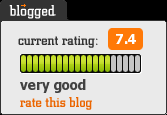There were many obstacles that I ran into while producing a web tutorial using Adobe Captivate. For however intuitive the program actually is, there were many features utilized that took me quite some time to tease out of this program.
One of the most important preparations that you can consider is the delineation of your audience. In other words, what group of people are going to benefit most from your tutorial? This is important because if your learning goals or objectives are not appropriate, then you will be spinning your wheels for naught. For example, you wouldn't necessarily teach a child in grammar school how to conduct a controlled vocabulary search. You might want to start off with a keyword search to get them acclimated to the idea of searching, and then scaffold the skills they would need to mater before they get to the controlled vocabulary searches.
Specifically, I designed my project for community college students at Bronx Community College, even though my bibliographic lesson plan was designed for the senior college students at Queens College. I thought it might prove more instrumental for students who are just entering college and need a little push, rather than the highly competitive, self-directed senior college students. That is why there are so many caption bubbles in my tutorial; I wanted community college users that need the extra information to not feel that they were being taught material that is "above their heads." At the same time, I did not want to make them feel as if this was a remedial tutorial; therefore, this was a balance that I had to strike as I developed my tutorial.
I noticed that I could change the background colors and other visual aspects of my tutorial. This is convenient for tutorial developers because they can change the background colors of their tutorial to match the background colors of the website that will host their tutorial. For example, the background of my tutorial inherited the color schematics that the designers assigned to Academic Search Premier; the color schematics of the tutorial may or may not clash with the color schematics of the hosting web site, so you can see how tutorial developers might want to manipulate this fact. On top of that, Captivate is really set up to accommodate various custom scenarios and various users of varying skill levels.
There is a particular need that I am trying to address through my tutorial; that need has to do with the fact that most college students are relying too heavily on search engines to do their research. I wanted to show students how easy it was to conduct subject term searching in one of the most popular online indexes available to C.U.N.Y. students. As a college assistant at Bronx Community College, I have noticed that many students are not even aware that there are online indexes for their use. Designing this tutorial gave me an excuse to create something that would ease their transitions into the world of online indexes. The query I chose was actually picked (and modified) from one of the research assignments that a professor at Bronx Community College gives his students, therefore, I thought it would be most appropriate for a community college audience.
By far, the best insurance against having to record multiple, deficient tutorials is to write out a script. At first, my script was a little convoluted because I was guilty of trying to do too much. For example, I wanted to start my tutorial at the college homepage and guide students to the page that has all the online indexes, but was advised against that as it would require too many steps.
As it stands now, my presentation has over 70 slides and lasts roughly 2 minutes. Could you imagine if I started out at the college's homepage--that would have added at least 10 more slides to an already large file, etc. This project taught me to keep it simple, if only to make the tutorial a simple product, not in terms of inspiration but in terms of execution. Ideally, one would want their web tutorials produced through Adobe's Captivate to be transparent and uncluttered; future users will certainly appreciate it and if you want to add something you think is integral then those additions can be made with ease.
It is obvious that I am still a novice; there are many features that I still want to incorporate into future tutorials. I am more than happy though to have struggled with this program and figured out its rudimentary parameters; I am positive that knowing this program will make me a more attractive candidate for a college library to employ and retain. More importantly, I thank you professor Li for committing to us and making sure we are released into the wide world with a working knowledge of pertinent software and professional protocols.
Spicaresque:
A Spanglish blog dedicated to the works, ruminations, and mongrel pyrotechnics of Yago S. Cura, an Argentine-American poet, translator, publisher & futbol cretin. Yago publishes Hinchas de Poesia, an online literary journal, & is the sole proprietor of Hinchas Press.
Subscribe to:
Post Comments (Atom)

.png)

1 comment:
I have been using Adobe Captivate for some time now and would enjoy the opportunity to view your first video tutorial. You can check out some of my tutorials at my blog.
Regards
Brian
http://assistivetek.blogspot.com
Post a Comment